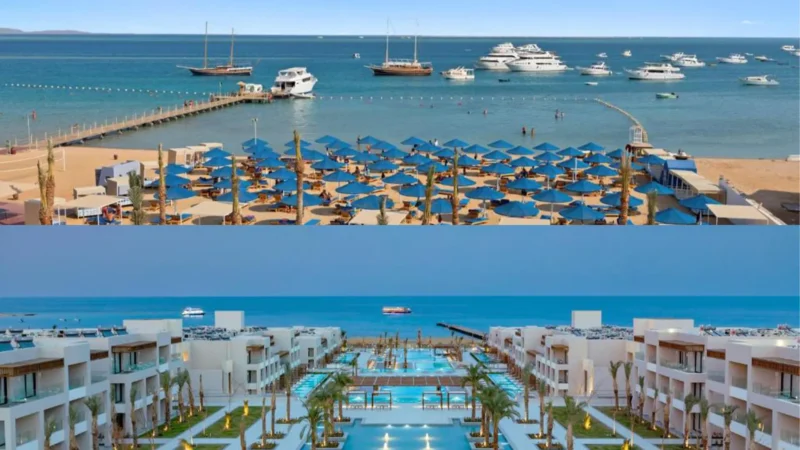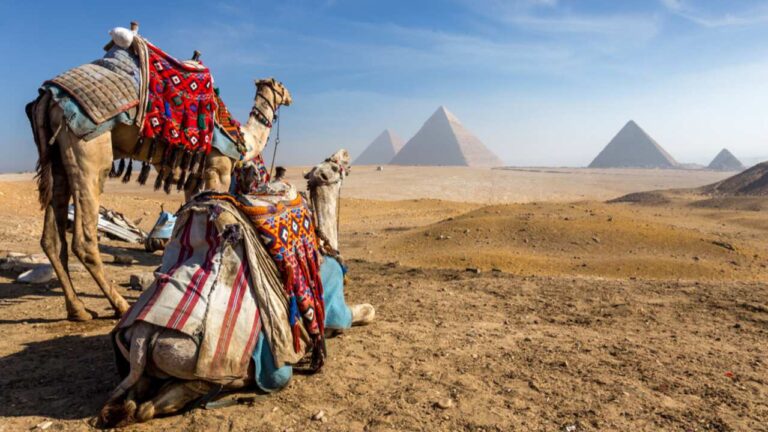Egypt holds more than just history lessons. It’s layered with myth, color, heat, and heart. Whether you’re into pharaohs or peaceful coastlines, the country pulls you in fast—and keeps surprising you. I didn’t come to Egypt with a long checklist. I came with curiosity, a few practical shoes, and a real interest in finding what feels authentic. Here’s where I found magic.
Key Highlights
- Giza Pyramids still top every traveler’s list, and for good reason.
- Luxor offers the richest archaeological experience in Upper Egypt.
- Deluxe Nile Cruises add comfort and privacy to cultural travel.
- Siwa Oasis is a quiet, off-grid gem near the Libyan border.
- Alexandria brings the Mediterranean into the Egyptian story.
- Red Sea towns like Marsa Alam blend coral reefs with calm.
Cairo and Giza – The Gateway to Egypt’s Ancient Soul
No one forgets their first look at the Pyramids. They rise from the edge of the desert like something dropped in from another planet. Giza’s size is staggering, but it’s the smaller details that stay with you: the camel drivers calling out for photos, the sound of the wind against stone, the heat that sits in the sand.
Cairo itself is chaotic but full of personality. I spent hours in the Egyptian Museum, which holds more treasures than any building I’ve visited. Tahrir Square pulses with movement and noise. Khan El Khalili market, with its incense, lanterns, and friendly haggling, feels like stepping through a different time.
Tips:
- Arrive early to Giza. The crowds thicken fast.
- Wear closed shoes. The sand gets hot.
- Skip the public camel rides unless you’ve confirmed ethical treatment.
Sailing Into History – Upper Egypt by Cruise
Traveling between Luxor and Aswan by boat isn’t just practical—it’s peaceful. It gave me a chance to rest between temple visits and absorb the slower rhythms of Nile life.
If you’re unsure about where to stay or how to get around without stress, deluxe Nile cruises make it surprisingly easy. You get smooth transport, comfortable rooms, and someone who actually knows the history walking beside you the whole way.
I’ll admit, I had doubts—was it going to feel too packaged or rushed? But it didn’t. Having a private guide changed everything. Visiting places like Karnak and Hatshepsut’s Temple didn’t feel like checking off a list. It felt like discovering the story behind each site at my own pace, with someone there to connect the dots.
One thing I didn’t expect: how many moments I wanted to freeze. Morning light over the Nile, kids waving from the riverbank, the carved walls of Edfu glowing gold at dusk. Instead of letting those shots get lost in my camera roll, I pieced them together afterward with an easy to use photo collage maker. It helped me capture the mood, not just the monuments. Looking at them now, I don’t just remember the trip—I feel it again.
Luxor – Where Temples Touch the Sky
Luxor is overwhelming in the best way. It’s one enormous open-air museum. Even crossing the street can feel like passing through a storybook. Walking through the Hypostyle Hall at Karnak, the sheer size of the stone columns made me feel small in a good way.
View this post on Instagram
I joined a hot-air balloon ride at dawn. Watching the sun break across the West Bank was emotional. The landscape lit up in slow motion. If you’re not into crowds, head to Medinet Habu—it’s quieter, more preserved, and deeply photogenic.
Tip: Luxor demands at least three days. Anything less and you’re rushing through centuries.
Aswan – Calm, Culture, and Color
Aswan felt like a deep exhale after Cairo. The Nile here moves slowly. The pace shifts. I visited the Nubian village and had hibiscus tea with a local family—one of the best afternoons of my trip. The colors, the hospitality, the laughter all stay with me.
Take the boat ride to Philae Temple. Visit the Unfinished Obelisk. Then do absolutely nothing at all for a few hours. Watch the feluccas drift by.
Don’t Miss:
- Nubian Museum
- Elephantine Island
- The Old Cataract Hotel for a tea with a view
Siwa Oasis – Peace on the Edge of the Map
Few tourists make it out to Siwa. That’s part of the appeal. It sits near the Libyan border, hugged by palm trees and salt lakes. The air is still. The nights are pitch black. The silence feels sacred.
Shali Fortress stands in quiet ruin, but the views from the top at sunset give you a new sense of scale. Cleopatra’s Bath is a natural spring where locals still swim. Try the dates and olives—they’re among the best in the country.
What to Know:
- It’s remote. Expect a long drive.
- Internet is patchy. Download offline maps.
- Bring cash. Card acceptance is rare.
Alexandria – Coastal City with a Different Vibe
Egypt’s Mediterranean face. Alexandria is nothing like the rest of the country. It’s cooler, calmer, and steeped in Roman influence. The Bibliotheca Alexandrina is sleek and symbolic. The Catacombs of Kom El Shoqafa are both eerie and fascinating. And seafood here? Unmatched.
I walked the Corniche with local families, sat on weathered benches with ice cream, and watched fishermen pull in nets under pink skies. You don’t go to Alexandria for big monuments—you go to feel something older and gentler.
Red Sea Escape – Marsa Alam Over Hurghada

Many head to Hurghada for water sports, but I wanted something quieter. Marsa Alam delivered. Coral reefs, sea turtles, no noise. Snorkeling at Abu Dabbab was surreal. The water was clear as glass. The sand? White and nearly untouched.
Local lodges were simple but comfortable. There’s something special about drinking coffee by the sea after sunrise without hearing a single motorboat.
Best Activities:
- Snorkeling at Elphinstone Reef
- Dolphin House trip
- Beach yoga at sunrise
Conclusion – Egypt Is Always More Than You Expect
Egypt isn’t always easy—but it’s always worth it. I dressed modestly. I stayed alert in crowded areas. I kept my valuables tucked away. But I also laughed with strangers, tasted food I couldn’t name, and saw sights that beat every postcard.
I came for the pyramids. I stayed for the people, the silence of tombs, the golden light across old stones, and the coffee shared with strangers. Egypt surprised me, moved me, and gave me stories I didn’t know I needed.
You don’t have to know every historical detail. You don’t have to visit every site. Let the country meet you where you are. It’s more than monuments. It’s a living, layered place with soul.
For every well-known landmark, there’s a quiet moment waiting somewhere off the path. Pack light. Stay curious. And give yourself enough time to not rush. Egypt reveals itself slowly, but never halfway.

